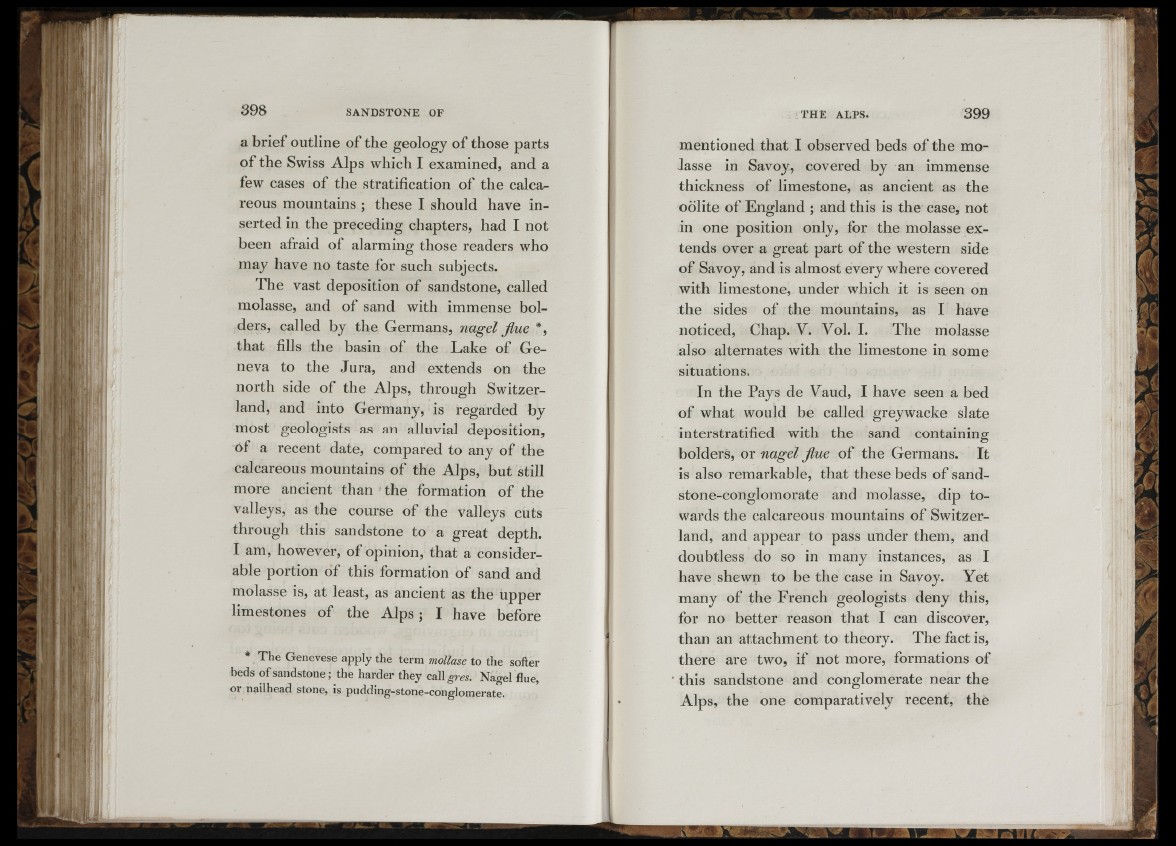
f e
u
i f 1. •' i: -ri6í;
4 .¡-Xix-:
. I i ! í fi I
it r i
,í ! A! )(
‘ArUriljl
1 < III h il .: I
31
a brief outline of the geology of those parts
o f the Swiss Alps which I examined, and a
few cases of the stratification of the calcareous
mountains ; these I should have inserted
in the preceding chapters, had I not
been afraid of alarming those readers who
may have no taste for such subjects.
The vast deposition of sandstone, called
molasse, and of sand with immense holders,
called by the Germans, nagel flue *,
that fills the basin of the Lake of Geneva
to the Jura, and extends on the
north side of the Alps, through Switzerland,
and into Germany, is regarded by
most geologists as an alluvial deposition,
of a recent date, compared to any of the
calcareous mountains of the Alps, but still
more ancient than the formation o f the
valleys, as the course of the valleys cuts
through this sandstone to a great depth.
I am, however, of opinion, that a considerable
portion of this formation of sand and
molasse is, at least, as ancient as the upper
limestones of the A lp s ; I have before
* The Genevese apply the term molíase to the softer
beds of sandstone; the harder they call gres. Nagel flue,
or nailhead stone, is pudding-stone-conglomerate.
399
mentioned that I observed beds of the molasse
in Savoy, covered by an immense
thickness of limestone, as ancient as the
oolite of England ; and this is the case, not
in one position only, for the molasse extends
over a great part o f the western side
of Savoy, and is almost every where covered
with limestone, under which it is seen on
the sides of the mountains, as I have
noticed. Chap. V. Vol. I. The molasse
also alternates with the limestone in some
situations.
In the Pays de Vaud, I have seen a bed
of what would be called greywacke slate
interstratified with the sand containing
holders, or nagel flue of the Germans. It
is also remarkable, that these beds of sand-
stone-conglomorate and molasse, dip towards
the calcareous mountains of Switzerland,
and appear to pass under them, and
doubtless do so in many instances, as I
have shewn to be the case in Savoy. Yet
many of th e French geologists deny this,
for no better reason that I can discover,
than an attachment to theory. The fact is,
there are two, if not more, formations of
this sandstone and conglomerate near the
Alps, the one comparatively recent, the
m